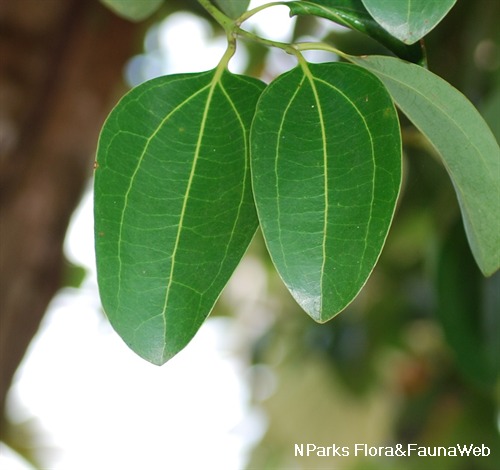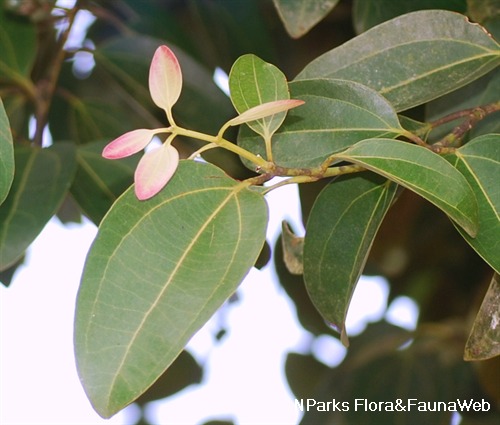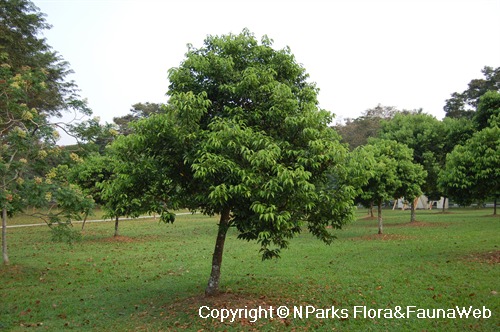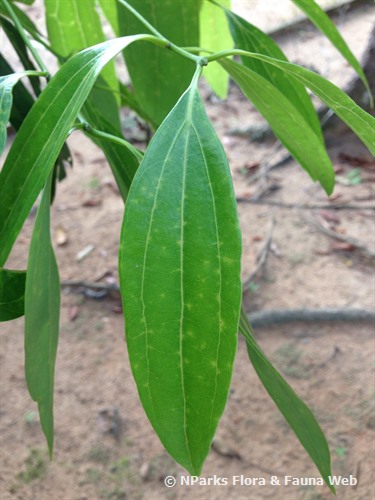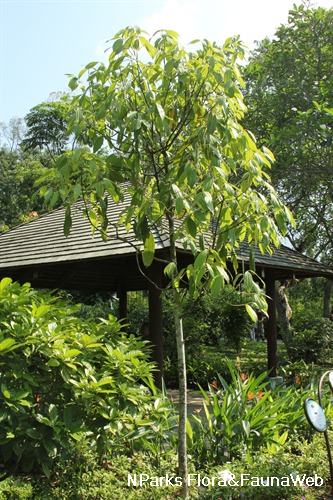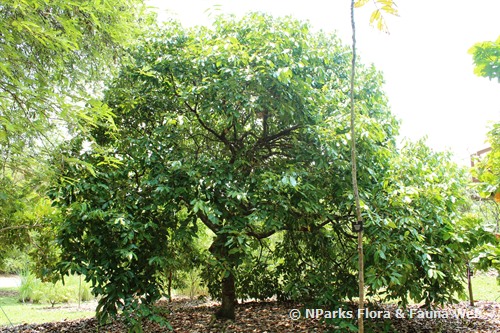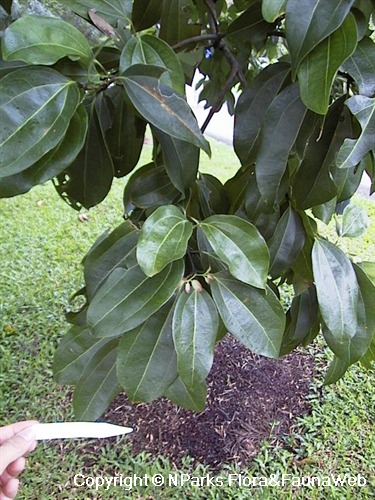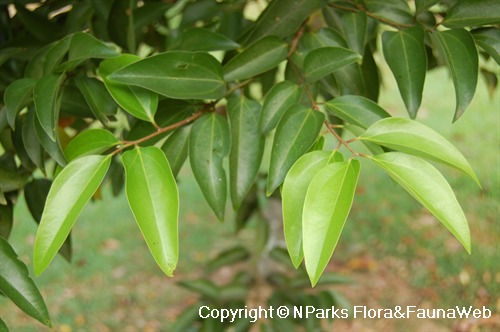
Back
Cinnamomum verum
| Family Name: | Lauraceae |
| Synonyms: | Cinnamomum zeylanicum Blume |
| Common Name: | Cinnamon, Kayu Manis, Cinnamon Bark Tree |
Name
Classifications and Characteristics
| Plant Division | Angiosperms (Flowering Seed Plants) |
|---|---|
| Plant Growth Form | Tree |
| Lifespan (in Singapore) | Perennial |
| Mode of Nutrition | Autotrophic |
| Maximum Height | 17 m |
Biogeography
| Native Distribution | Sri Lanka |
|---|---|
| Native Habitat | Terrestrial |
| Preferred Climate Zone | Tropical |
| Local Conservation Status | Non-native |
Description and Ethnobotany
| Growth Form | It is a tree which can reach 8 - 17 m tall in its natural habitat. |
|---|---|
| Stems | Leaves are dark green, ovate to elliptic and opposite arrangement. Each leaf measuring about 5 - 18 cm long and 3 - 10 cm wide, and has distinct 3 yellow veins from the base to the tip. Young leaves emerge reddish and gradually turn green as they mature. |
| Flowers | Flowers borne on axillary and terminal panicle inflorescence. Each flower is cream to white and small, about 3 mm wide. |
| Fruit | Fruit is a ovoid fleshy purple drupe about 1.5 - 2 cm long and contains 1 seed. |
| Etymology | Genus Cinnamomum is from the Greek word "Kinnamomon" which means spice. Species verum means true or genuine. |
| Ethnobotanical Uses | Food (Herb or Spice): The bark of this tree is used as a spice seasoning for meat, sauces, baked goods and drinks. Oil extracted from the leaves is also used as a flavouring agent in snacks. Medicinal: Oil is extracted from the bark and used in pharmaceutical and dental preparations. Timber & Products: Wood has very good working qualities. |
Landscaping Features
| Landscape Uses | Parks & Gardens, Small Gardens |
|---|
Fauna, Pollination and Dispersal
| Fauna Pollination Dispersal Associated Fauna | Bird-Attracting, Butterfly Host Plant |
|---|---|
| Pollination Method(s) | Biotic (Fauna) |
| Seed or Spore Dispersal | Biotic (Fauna) |
Plant Care and Propagation
| Light Preference | Full Sun |
|---|---|
| Water Preference | Moderate Water |
| Plant Growth Rate | Moderate |
| Rootzone Tolerance | Moist Soils, Well-Drained Soils |
| Propagation Method | Seed |
Foliar
| Foliage Retention | Evergreen |
|---|---|
| Mature Foliage Colour(s) | Green |
| Foliar Arrangement Along Stem | Opposite |
| Foliar Attachment to Stem | Petiolate |
Floral (Angiosperm)
| Flower Colour(s) | White, Cream / Off-White |
|---|---|
| Flower Grouping | Cluster / Inflorescence |
| Flower Location | Axillary, Terminal |
Fruit, Seed and Spore
| Mature Fruit Colour(s) | Purple |
|---|---|
| Fruit Type | Fleshy Fruit |
| Seed Quantity Per Fruit | Few (1-5) |
Image Repository
Others
| Master ID | 1514 |
|---|---|
| Species ID | 2807 |
| Flora Disclaimer | The information in this website has been compiled from reliable sources, such as reference works on medicinal plants. It is not a substitute for medical advice or treatment and NParks does not purport to provide any medical advice. Readers should always consult his/her physician before using or consuming a plant for medicinal purposes. |

